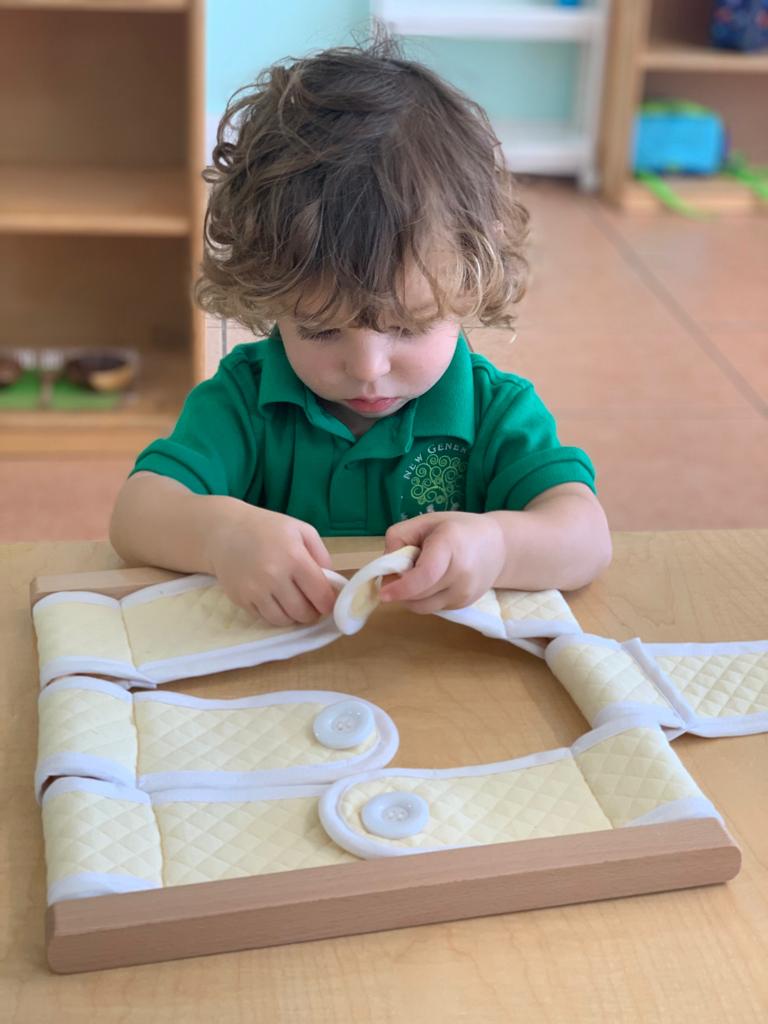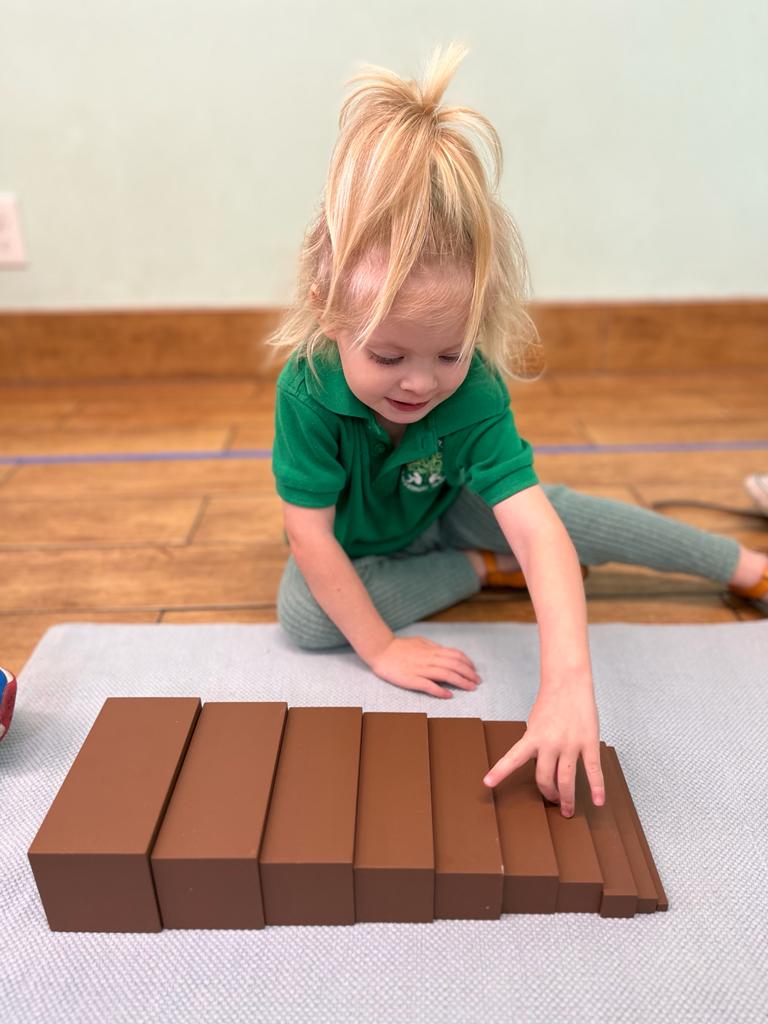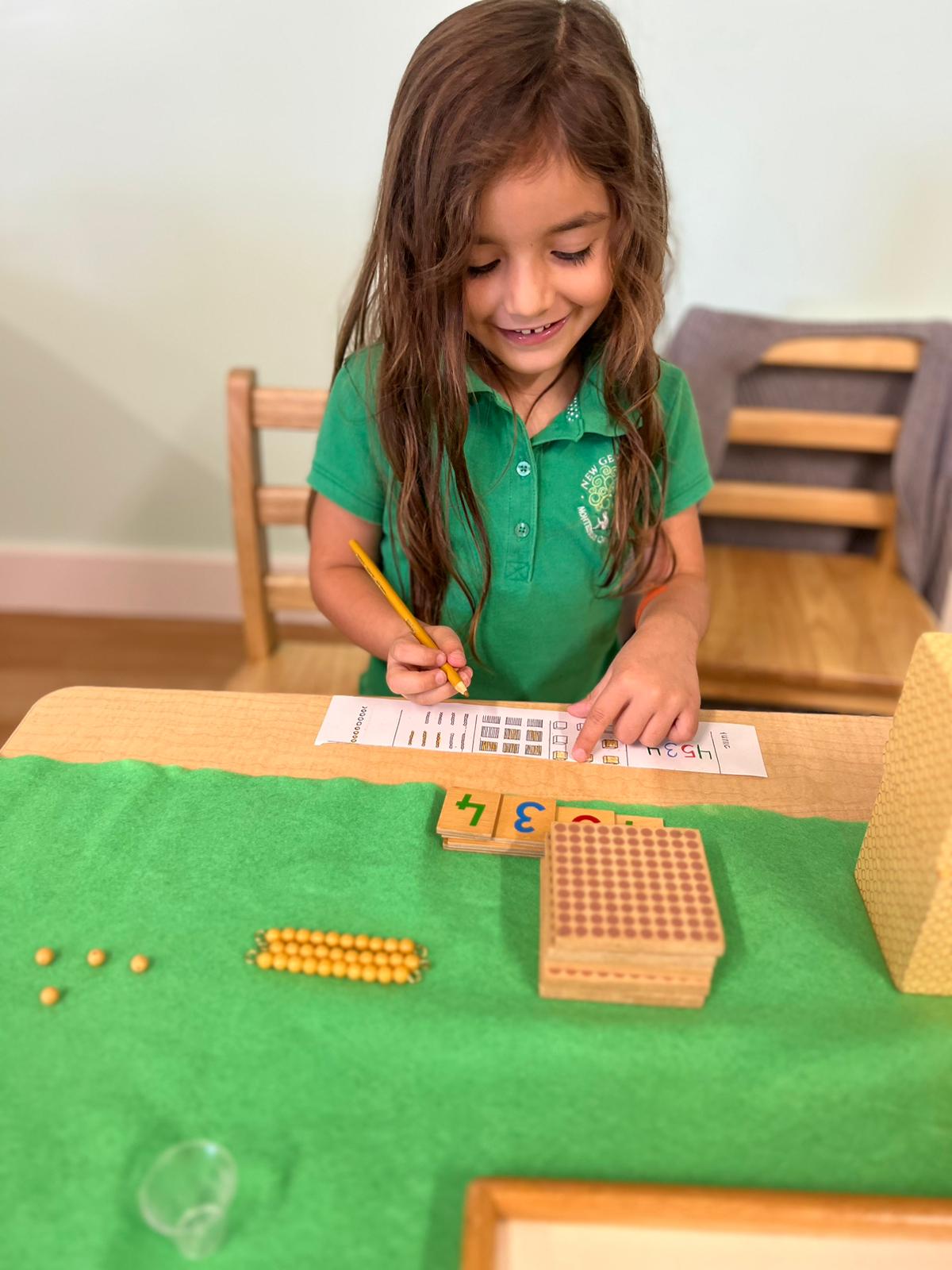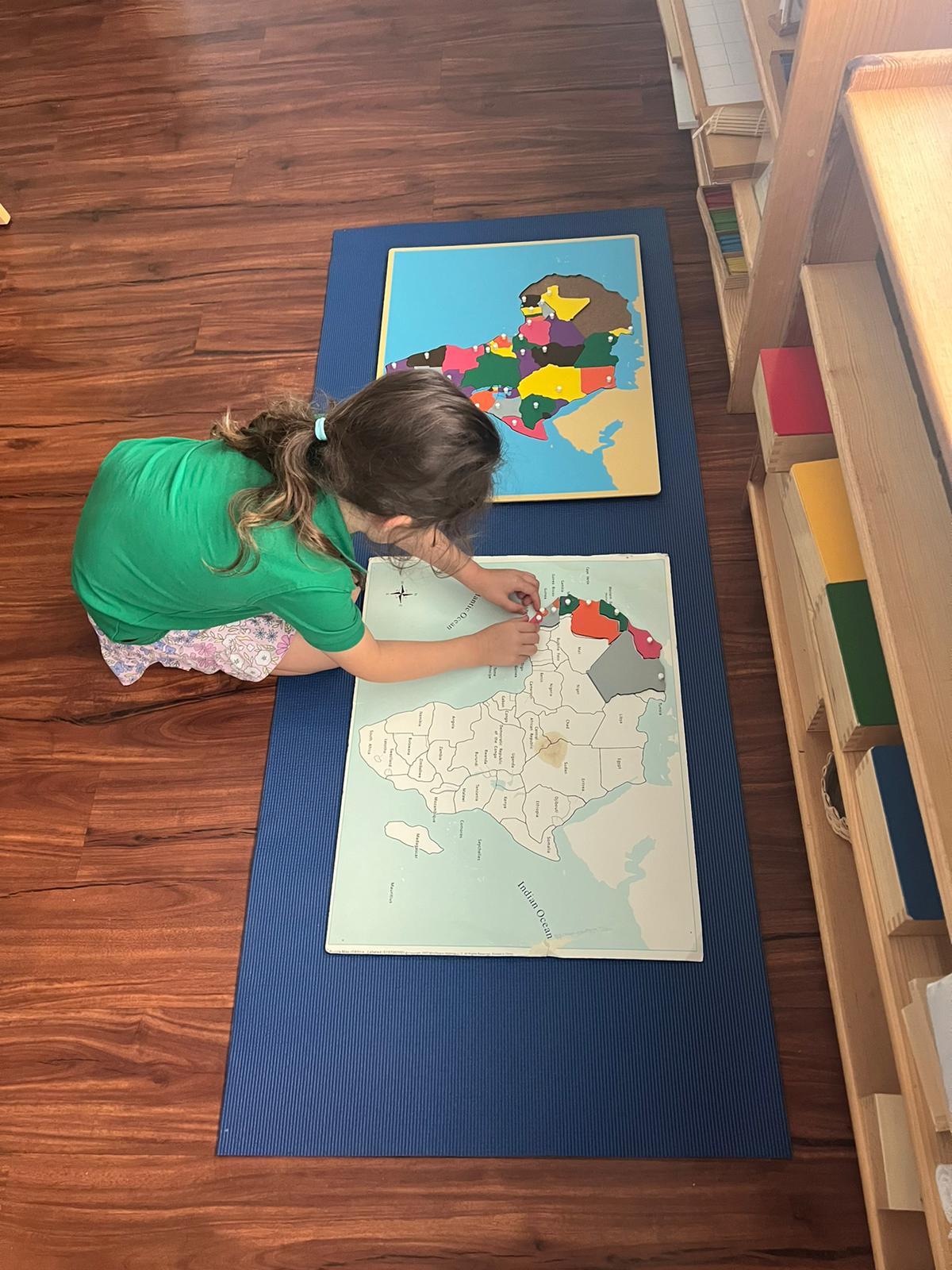A Prepared Environment
Child-centered Environment
A hallmark of every Montessori classroom is the prepared environment—a space carefully designed to feel like a child’s own special home. Dr. Maria Montessori emphasized the importance of creating classrooms that serve the child, not the adult. Instead of oversized shelves and furniture built for teachers, Montessori classrooms feature child-sized shelves, tables, chairs, and materials—allowing children to move freely and confidently in their world.
In this child-centered environment, students work at their own pace, choosing tasks that match their developmental stage, with guidance offered only when needed. Every detail is intentionally planned so that children can follow their natural curiosity, never miss a sensitive period of growth, and master each new skill in their own time.
The five Main areas of a Montessori Environment

Practical life
The Practical Life area is one of the most detailed and foundational parts of the Montessori classroom. “Practical” means suitable for a purpose, while “Life” refers to the way we live day to day. Together, Practical Life activities teach children meaningful skills for everyday living, while fostering the core goals of OCCI: Order, Coordination, Concentration, and Independence.
In this area, children gain confidence and a sense of responsibility through lessons such as:
-
Control of Movement – Developing fine motor skills through activities like pouring, spooning, serving, opening and closing, and other precise hand movements.
-
Grace and Courtesy – Learning positive social interactions, respect, and empathy through real experiences such as setting the table, preparing snacks, greeting others, and caring for classmates.
-
Care for the Environment – Building responsibility and respect for their surroundings by polishing plants, feeding pets, cleaning tables, sweeping, and other tasks that nurture order and care.
Through these activities, children don’t just practice skills—they develop confidence, independence, and a love for contributing meaningfully to their community.

Sensorial
The Sensorial area of the Montessori classroom is designed to refine a child’s ability to observe, compare, and classify the world around them. Through carefully crafted, hands-on materials, children strengthen their five senses—sight, touch, sound, taste, and smell—while also developing skills in perception and discrimination.
Each activity draws attention to specific qualities that might otherwise be overlooked: color, shape, size, weight, texture, smell, sound, and taste. By isolating and highlighting these details, children gain the ability to notice patterns, organize information, and think critically.
The years from birth to age six are a crucial period for sensory development. In the Sensorial area, children build the foundation for abstract thinking by first exploring the concrete world through their senses—preparing them for success in mathematics, language, and beyond.

Language
The Language area of the Montessori classroom supports children as they move through the natural stages of language development. It begins with early activities that strengthen a child’s ability to discriminate sounds and shapes, laying the foundation for recognizing letters and words.
Montessori places a strong emphasis on phonetics, using hands-on, manipulative materials that make the connection between sounds and symbols concrete and engaging. Step by step, children expand their vocabulary, explore the structure of words, and progress from sounds to writing, grammar, and ultimately to reading with comprehension.
In this area, children gain not only literacy skills but also the joy and confidence of self-expression—opening the door to communication, imagination, and a lifelong love of language.

Mathematics
The Mathematics area of the Montessori classroom helps children move from concrete, hands-on experiences to abstract understanding. Using beautifully designed materials such as number rods, golden beads, spindle boxes, and bead chains, children build a clear, tangible foundation in numbers, patterns, and logical reasoning.
Step by step, they progress from counting and recognizing quantity to exploring operations, place value, and more advanced concepts. Along the way, children develop not only mathematical skills, but also concentration, independence, and confidence—qualities that prepare them for success in problem-solving both inside and outside the classroom.

Cultural Studies
Beyond the core subjects, Montessori education opens the door to a wide world of discovery through Cultural Studies. This area includes Geography, Foreign Languages, Science, Botany, Zoology, Anatomy, Art, and Music—giving children opportunities to explore knowledge across many fields.
Montessori classrooms are designed to meet every child’s sensitive periods for learning. Whether it’s studying continents and cultures, conducting hands-on science experiments, observing the natural world, or expressing creativity through art and music, children are free to follow their interests.
By choosing the activities that inspire them most, each child creates their own unique path of exploration—developing not only knowledge, but also a deep appreciation for the world and their place within it.
The main principles to a Prepared Environment in any high-quality Montessori include:
FREEDOM:
The best way for a child to learn is through freedom. The child will not be able to grasp information presented if they did not choose it freely, they will only be doing it out of obligation. In order for the child to truly be interested and engaged, the child must experience freedom of movement, freedom of exploration, freedom to interact socially, and freedom from interference from others. This freedom ultimately leads to a greater freedom: freedom of choice.
STRUCTURE AND ORDER:
Hand in hand with freedom, come structure and order. “Order means light and peace, inward liberty and free command over one’s self; order is power.” During the sensitive period for order, the child cries out silently for order, he cannot perform to his highest potential if there is no order in his mind. He must see order in his environment, and he will naturally develop a sense for structure and order, it is not something the child needs to be taught, it is spontaneous and inside the child already.
BEAUTY:
A Montessori environment is always beautiful. Simply put, It’s human nature- we are more inclined to leave something dirty, if it is already dirty, than if we were to leave something clean if it was already clean. The same concept manifests itself in a Montessori environment, when the children see their beautiful classroom: clean, organized, in harmony, they are more inclined to keep it that way. They are happier in an atmosphere that provides peace and is pleasing to their eye, rather than an environment that causes them to be feel chaos and mess.
NATURE & REALITY:
Montessori had a deep respect and reverence for nature. She believed that we should use nature to inspire children. Fantasy play was switched for reality, instead of a fake plants, children learned how to care for real plants, instead of playing with fake dolls, children learned how to wash a baby and how to dress a baby. A prepared environment invites children to learn about the real things that surround them, butterflies flying in the yard, Earthworms that alter the soil and allow air and water to circulate. These are concepts that will carry with them and their children.
INTELLECTUAL ENVIROMENT:
All our Montessori environments are carefully and beautifully designed around five areas. Practical life, Sensorial, Language, Mathematics and Cultural studies.
MULTI-AGE CLASSROOMS
In a prepared Montessori environment, you find children of different ages in the same room. This allows for Our children learn how to care for each other, as they create a family setting with sibling-type relationships. Here is where the different ages learn skills and traits such as motivation, self-esteem, self-control, reinforcement and many more benefits that allow them to grow a community outside of their home.
